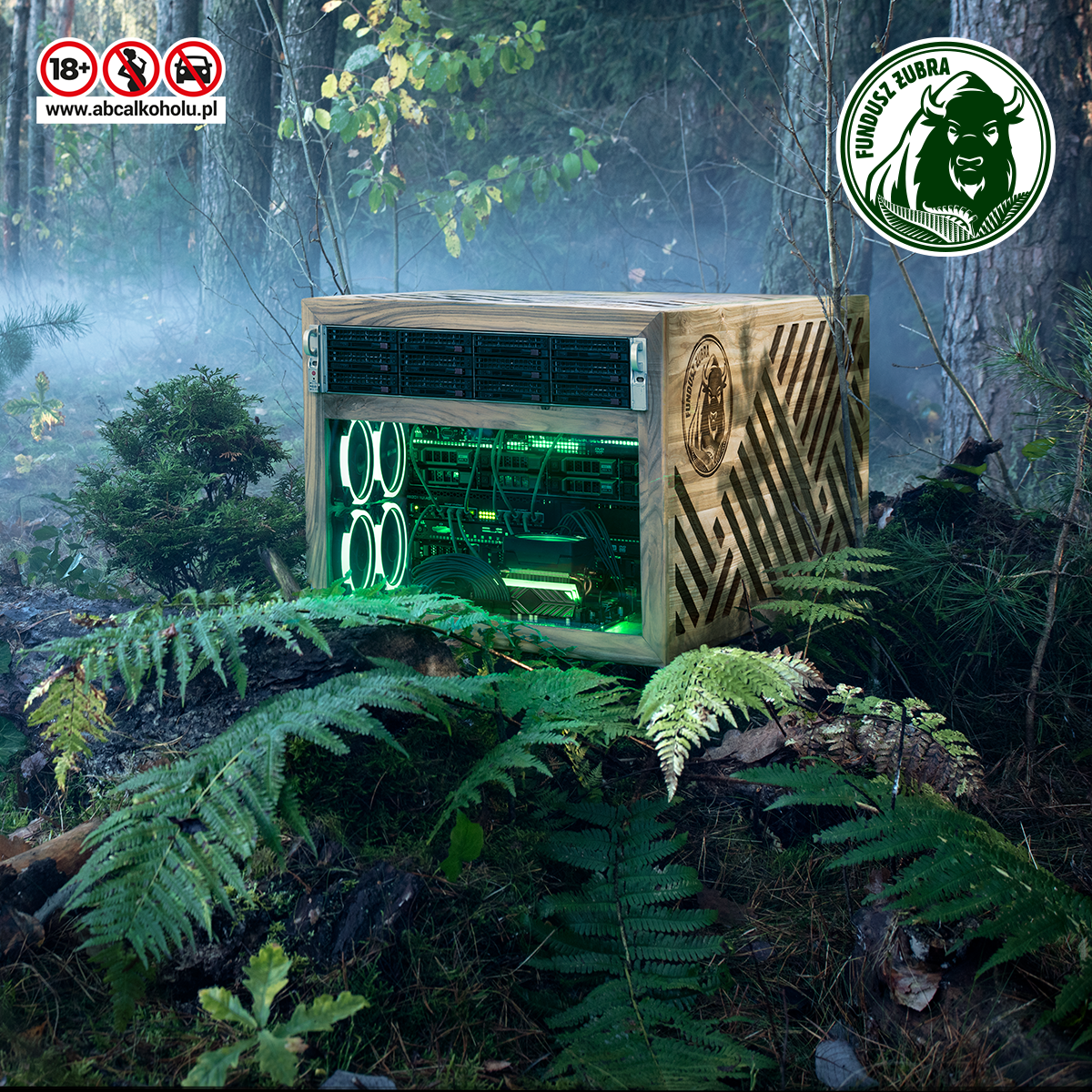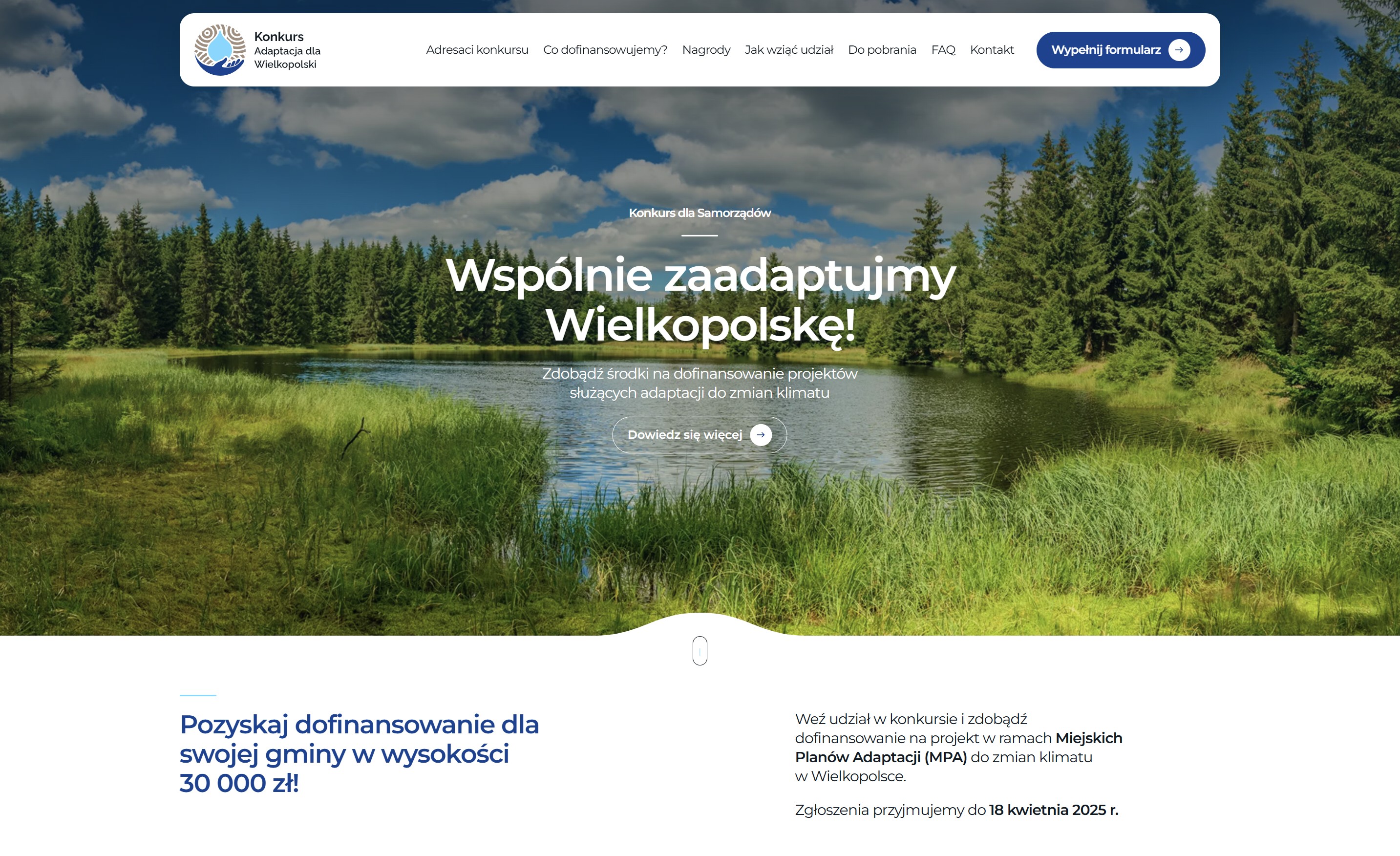Supercomputer from the Żubr Fund sees, hears and understands wild animals
The Żubr Fund has donated PLN 100,000 to the Mammal Research Institute of the Polish Academy of Science (MRI PAS) for the purchase of a supercomputer. The hi- end hardware uses Artificial Intelligence to process data from detectors installed across the Bialowieza Forest, accelerating research on endangered species of animals.
Scientific breakthrough
Changing the work methodology – from analogue field research to digital measurements – is a standard in most European countries. The MRI PAS employees are increasingly using cutting-edge tools such as: drones, camera traps, acoustic detectors, allowing them to conduct research in hundreds of places at the same time. An example of that are the camera traps installed by the scientists from MRI PAS, recording even several thousand photos and videos a year. With such intensity of digital measurements, the scientists obtain an impressive amount of data. To facilitate their processing, Kompania Piwowarska’s Żubr Fund supported the project with a new, efficient supercomputer.
Visually, the supercomputer resembles a classic one, but what makes it stand out is its computing power using AI algorithms to recognize objects and events on photos, videos, sound files. It makes it easier to classify them automatically. Metaphorically speaking, it is “data knowledge squeezer”.
Artificial Intelligence in the world of nature
The supercomputer will operate on the Trapper AI expert system, designed by MRI PAS, Open Science Conservation Fund and Slavic AI from Bialystok. The system processes sensor-derived data, learning to identify animals in their natural environment. Trapper AI has been successfully implemented in the Karkonoski National Park and ten national parks in Germany, arousing interest among other European parks and research institutes.
– Artificial Intelligence used worldwide helps speed up research. Poland is now only catching up with other countries. This is a breakthrough for wildlife sciences – says Michał Żmihorski, Director of the Mammal Research Institute of the Polish Academy of Science.
The sensors are small recording devices: camera traps, audio recorders, meteo sensors, drones, automatic photo cameras. They can be placed randomly or in specific locations along a road or by a water reservoir, where animals gather.
The network of listening points allows the scientists to precisely monitor large areas of the Forest simultaneously – while traditional methods would require hiring 150 qualified experts. The system’s features include: creating a map of species habitats, tracking their population changes.
The camera traps and acoustic detectors enable following the secret life of lynxes and other wild animals. Thanks to this method, for the first time in years, a visit of a Belarusian bear in the Białowieża Forest was recorded.
Based on the data, researchers build daily and seasonal animal activity patterns, and they can estimate the species richness index or describe their behavior. MRI PAS uses these methods to follow bats, rodents, predators, birds and insects.
– To protect biodiversity and endangered species, we have to first find out what makes them endangered. We explore which environmental features correlate with the presence or vanishing of a species, thus we need extensive knowledge of the environment – explains Professor Żmihorski.
Biodiversity hotspots
The supercomputer will support researchers in locating the hotspots of biodiversity and rare animal concentration areas, and thus justifying the need for wildlife conservation, e.g. by establishing nature reserves. Relevant recommendations for national parks, the government and forest district offices may lead to more effective protection of wild animals and their habitats.
The supercomputer will also enable further automation, development and training of new AI models, leading to faster data processing (from 10x up to even 100x faster).
Żubr’s partnership
– Within the framework of the Żubr Fund’s activities for this year, we decided to donate PLN 100,000 for the purchase of a supercomputer. It will allow researchers to increase the efficiency of the AI algorithm developed by MRI PAS - Trapper AI, which analyses data from several dozen camera traps and 120 detectors recording the sounds of birds and bats across the Białowieża Forest. The current partnership with MRI PAS is a result of our last year’s activities, which we are very satisfied with. Setting up towers and booths for bats has had a real impact on the quality of life of mammals and improved the relationship between the inhabitants of Białowieża and scientific employees – says Urszula Czerniawska- Kapeluch, Żubr Senior Brand Manager.
Would you like to contact our Press Office?
Borys Gryniewicz
Communications Manager
If you want to file a complaint or provide your opinion on our beers, use the contact details available in the ‘contact us’ tab.





